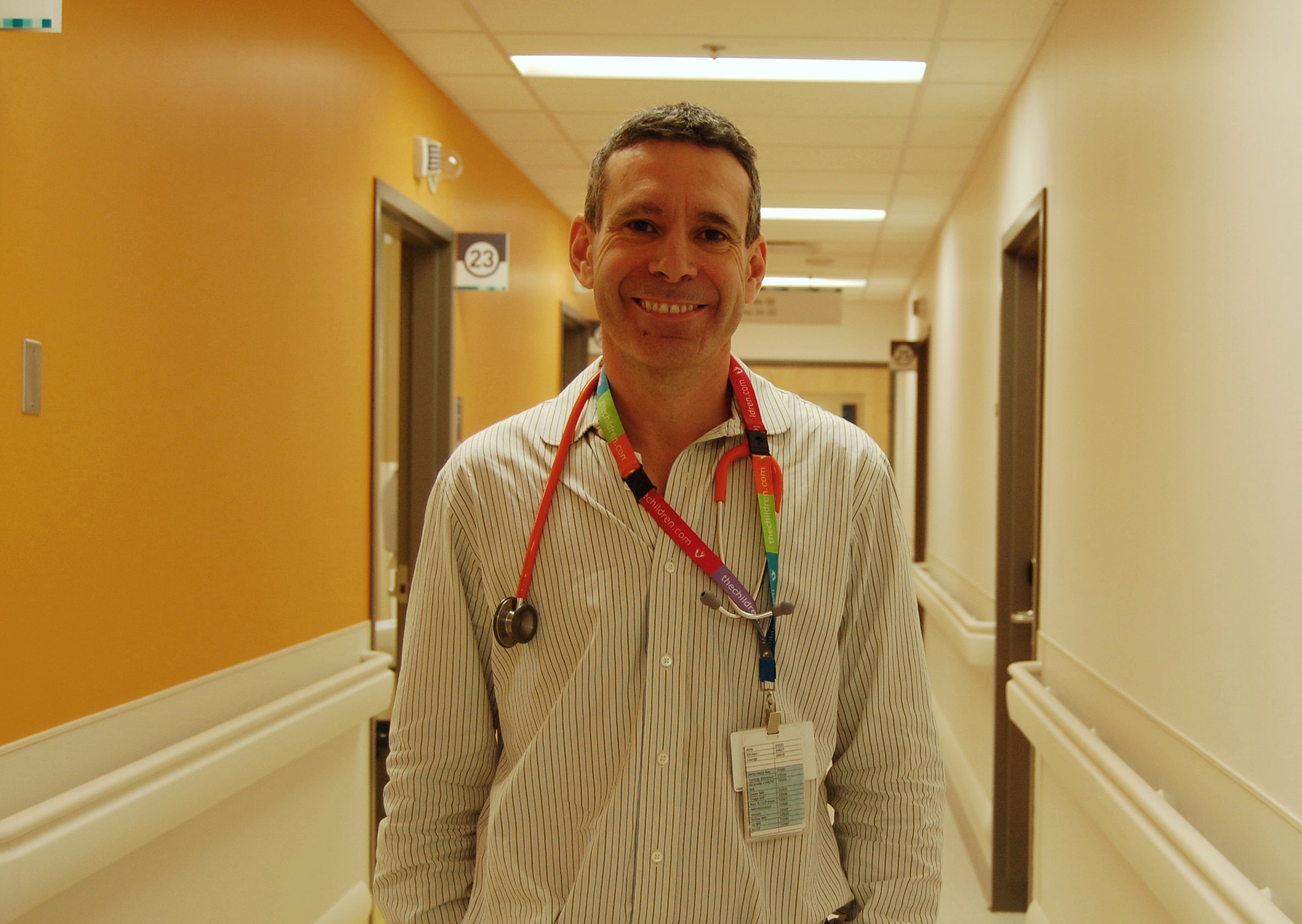Read about a stock epinephrine program in New Brunswick led by nurse practitioner Kelly Dunfield. Also, you can find out more details on current research involving twins with food allergy, the latest update with our meetings with McDonald’s Canada, and where you can view our recorded webinar on the new guidelines for feeding peanut to babies.
Saving lives with stock epinephrine: An interview with nurse practitioner Kelly Dunfield
In 2015, we wrote about a new stock epinephrine pilot project launched in Sussex, New Brunswick by nurse practitioner Kelly Dunfield, Robert Dunfield, and allergist Dr. Andrea Canty. The project was funded by the Sussex and Area Community Foundation. Food Allergy Canada supplied training materials and information, and Sanofi Canada provided an 18-month supply of auto-injectors.
The project, which ended December 31, 2016, established wall-mounted cabinets similar to automated external defibrillators (AED) stations, containing epinephrine auto-injectors for the emergency treatment of anaphylaxis in 28 locations, including restaurants, schools, the Fire Department, churches, healthcare facilities, and recreation centres.
We interviewed Kelly recently on this program to learn more on how it started, how it was implemented, and the impact it is having. Read our full interview.
An update on McDonald’s
 The #NotLovinIt campaign, which we ran in January/February of this year, focused on the community’s response to the allergy-related changes McDonald’s made in January. Your voice along with others from the community, helped us to get a meeting with McDonald’s President & CEO John Betts back in February.
The #NotLovinIt campaign, which we ran in January/February of this year, focused on the community’s response to the allergy-related changes McDonald’s made in January. Your voice along with others from the community, helped us to get a meeting with McDonald’s President & CEO John Betts back in February.
Since then, as you know, we have had additional meetings with the senior team at McDonald’s. Our discussions are focused on the needs of this community and getting clarity around these new allergy-related changes.
We are hoping to share the outcomes of these meetings with you shortly. Thank you for your continued patience as we meet with McDonald’s to advocate on your behalf.
Stay tuned!
New guidelines for the introduction of peanut to babies
 Last month, Dr. Julia Upton, hosted a webinar on the new guidelines for the introduction of peanut and what they mean. The webinar was a great success with almost 200 participants. Dr. Upton walked through the changes in the guidelines and provided practical examples in how to start feeding babies peanut.
Last month, Dr. Julia Upton, hosted a webinar on the new guidelines for the introduction of peanut and what they mean. The webinar was a great success with almost 200 participants. Dr. Upton walked through the changes in the guidelines and provided practical examples in how to start feeding babies peanut.
If you missed the webinar or would like to view it again, you can watch/share the recorded webinar.
Research Profile: Dr. Moshe Ben-Shoshan and the START Twin Study
Innovative research into the genetic and environmental aspects of food allergy is currently taking place at the Montreal Children’s Hospital, part of the McGill University Health Centre. Dr. Moshe Ben-Shoshan and his team in the allergy and immunology department have been studying the genetics involved in the development of food allergy for the past two years, and continue to seek twin pairs to participate.
According to Dr. Ben-Shoshan, the rationale for his study is based on the tremendous increase in food allergy prevalence – including anaphylaxis – over the past ten years. This increase cannot be explained by genetic changes alone, since genes simply don’t change that quickly. As a result, there is a need to investigate the factors at play in this rise in food allergy prevalence, whether environmental, or due to some kind of interaction between genetics and the environment.
The twin model is an ideal method to evaluate how much of food allergy development is genetic and how much is environmental. As Dr. Ben-Shoshan explains, “Twins have the advantage of having their own control inside the twin pair. Identical twins share exactly the same genetic background. Fraternal twins share only 50% of their genes. But, like identical twins, they share 100% of the environmental factors. So, with both identical twins and fraternal twins, if you start to feed them peanuts at the age of six months, the environmental factors will be shared in both twin pairs.
If we assume that the genetics are the main thing, you would expect that with identical twins, if one twin has a food allergy, the other one will necessarily have the same food allergy, because they share 100% of their genes. However, if environment is more important, they may not have the same food allergy. Twins allow us that unique opportunity to tease out whether [food allergy is] genetic or environmental. And to do that, we also need to look at each food allergy.”
In essence, by including twin pairs where at least one of the twins has a food allergy, the data offered by identical and fraternal twins offer researchers a point of comparison. As Dr. Ben-Shoshan points out, if the research comes to show consistency between identical twins, they would assume that food allergy is primarily genetic. But if they see that there is no real difference in prevalence between identical and fraternal twins, they would then conclude that it’s environmental.
Currently, the research team is collecting questionnaire data from both identical and fraternal twins of all ages, and they have put out a call for more volunteers to help them increase the study’s sample size.
To be eligible to participate in the study, candidates must live in Canada, and at least one twin needs to have been diagnosed with a food allergy by a medical doctor, with either skin or blood test results available, and a history of reactions to the allergen.
As Dr. Ben-Shoshan explains, “twins are a unique population,” and indeed, this study holds the potential to help us both understand why food allergies have become so common, and to potentially develop therapeutic strategies in the future.
To participate in this study or for more details, please contact Greg Shand, the study coordinator, by April 30, 2017 at 514-934-1934, ext. 23867 or startmch@gmail.com
Tags: advocacy, McDonald's, Research, twin study, webinar
